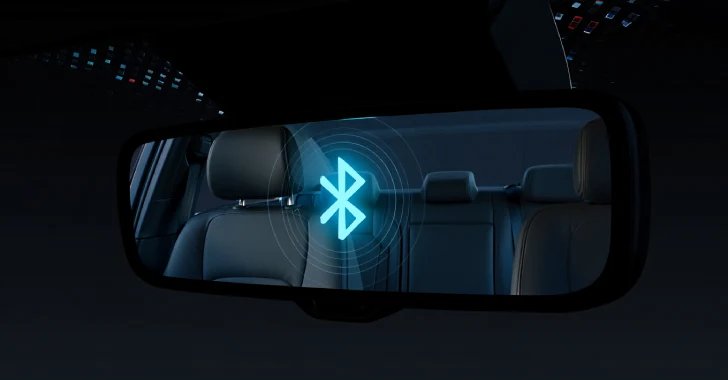Essential Insights
-
Vulnerability Discovery: Cybersecurity researchers have identified four critical vulnerabilities, termed PerfektBlue, in OpenSynergy’s BlueSDK Bluetooth stack, potentially allowing remote code execution (RCE) on vehicles from Mercedes-Benz, Volkswagen, Skoda, and at least one other unnamed manufacturer.
-
Exploitation Potential: The vulnerabilities enable attackers within Bluetooth range to execute a one-click attack on in-vehicle infotainment (IVI) systems, potentially providing access to sensitive functions such as GPS tracking and engine control, depending on the vehicle’s internal architecture.
-
Vulnerability Details: The four identified CVEs include:
- CVE-2024-45434 (8.0) – Use-After-Free in AVRCP service
- CVE-2024-45431 (3.5) – Improper validation of an L2CAP channel’s remote CID
- CVE-2024-45433 (5.7) – Incorrect function termination in RFCOMM
- CVE-2024-45432 (5.7) – Function call with incorrect parameters in RFCOMM
- Mitigation Efforts: Following a responsible disclosure in May 2024, patches addressing these vulnerabilities were deployed in September 2024 to enhance vehicle security against potential remote attacks.
The Issue
In a significant cybersecurity discovery, researchers from PCA Cyber Security have identified a quartet of vulnerabilities within OpenSynergy’s BlueSDK Bluetooth stack, collectively termed “PerfektBlue.” These flaws hold the potential for remote code execution (RCE) on a variety of transport vehicles, predominantly impacting models from notable manufacturers such as Mercedes-Benz, Volkswagen, and Skoda, in addition to an unnamed fourth original equipment manufacturer (OEM). The vulnerabilities stem from critical memory corruption and logical errors, which, if exploited in tandem, grant malicious actors unauthorized access to a vehicle’s In-Vehicle Infotainment (IVI) system. This creates an avenue for significantly more disruptive actions, including GPS tracking, audio recording, and even commandeering critical vehicular functions.
The report outlines the mechanics of the attack, emphasizing the ease with which it can be executed—requiring only that the assailant be within Bluetooth range to pair devices. This exploit hinges on the implementation specifics dictated by individual automakers, which can vary from unrestricted to stringent pairing protocols. Following a careful disclosure process that began in May 2024, patches were rolled out by September 2024 to mitigate these vulnerabilities. Interestingly, earlier this April, PCA Cyber Security presented similar findings regarding the Nissan Leaf, underscoring a broader concern regarding automotive cybersecurity, as systematic weaknesses in connectivity interfaces may allow for advanced exploitation techniques that threaten both safety and privacy in modern vehicles.
Risks Involved
The discovery of security vulnerabilities within OpenSynergy’s BlueSDK Bluetooth stack, termed PerfektBlue, poses a grave risk not only to the automakers directly affected—Mercedes-Benz, Volkswagen, and Skoda—but also to a broader ecosystem of businesses, users, and organizations reliant on connected vehicle technology. The ability for malicious actors to execute remote code via compromised infotainment systems amplifies the potential for unauthorized access across vehicle networks, enabling them to track users, manipulate critical vehicle functions, and inflict harm through theft of data or vehicles. This scenario could generate significant repercussions, including loss of customer trust, reputational damage, potential legal liabilities, and increased cybersecurity insurance costs for affected organizations. Moreover, peripheral businesses that integrate or partner with these automakers may find their operations jeopardized through compromised data integrity or disrupted services, ultimately leading to financial losses and erosion of market confidence in the safety of interconnected automotive technologies.
Possible Next Steps
The urgency of timely remediation in cybersecurity cannot be overstated, particularly when vulnerabilities threaten massive populations, such as the PerfektBlue Bluetooth weaknesses that expose millions of vehicles to potential remote code execution.
Mitigation Strategies
- Software Updates: Ensure all affected vehicles receive firmware updates promptly.
- Network Monitoring: Implement continuous monitoring of vehicle communication networks for unusual activity.
- Access Controls: Strengthen security protocols for Bluetooth connections, limiting access to trusted devices only.
- Incident Response Plan: Develop and regularly update an incident response strategy to quickly address potential breaches.
- User Awareness: Educate vehicle owners about the risks of connecting to unverified Bluetooth sources.
NIST Guidance
NIST’s Cybersecurity Framework (CSF) accentuates the necessity of proactive risk management and emphasizes the importance of implementing appropriate responses to vulnerabilities. For deeper insights, refer specifically to NIST Special Publication (SP) 800-53, which offers comprehensive controls for mitigating such software vulnerabilities in connected systems.
Explore More Security Insights
Discover cutting-edge developments in Emerging Tech and industry Insights.
Access world-class cyber research and guidance from IEEE.
Disclaimer: The information provided may not always be accurate or up to date. Please do your own research, as the cybersecurity landscape evolves rapidly. Intended for secondary references purposes only.
Cyberattacks-V1

